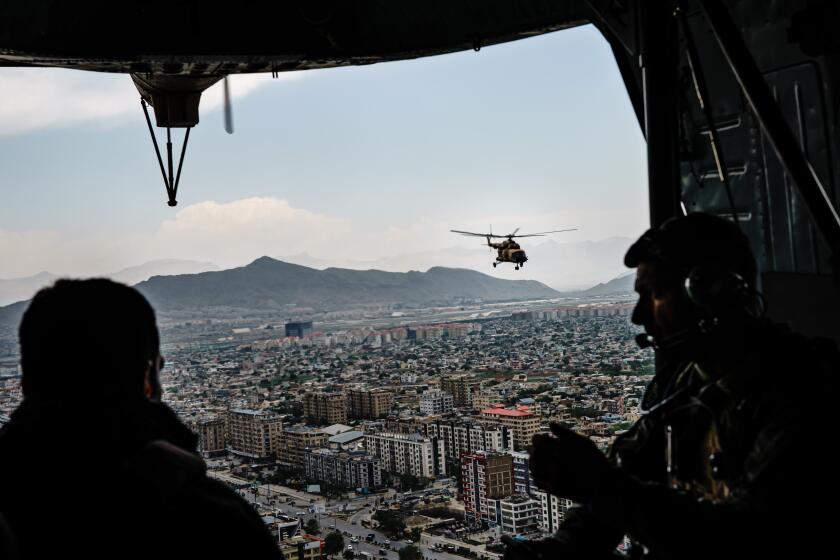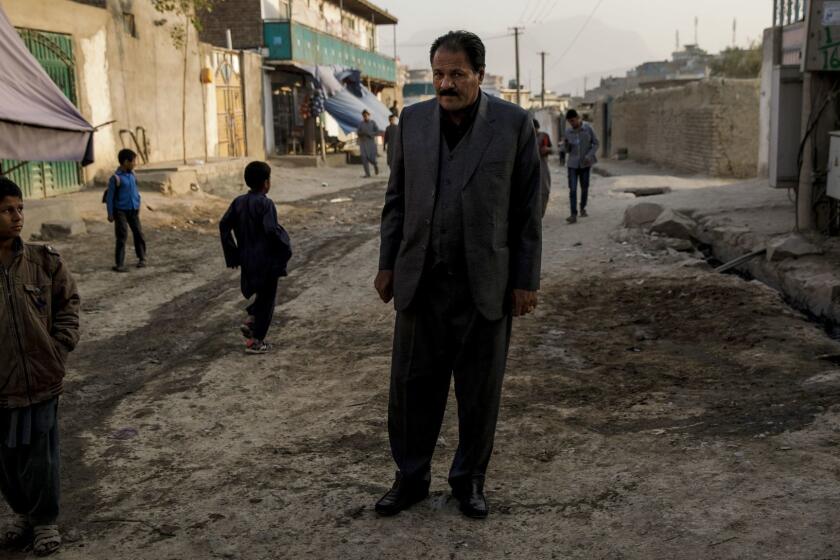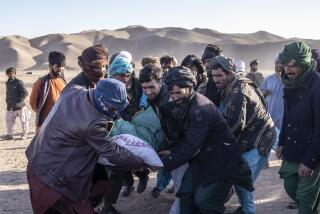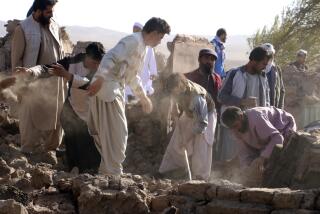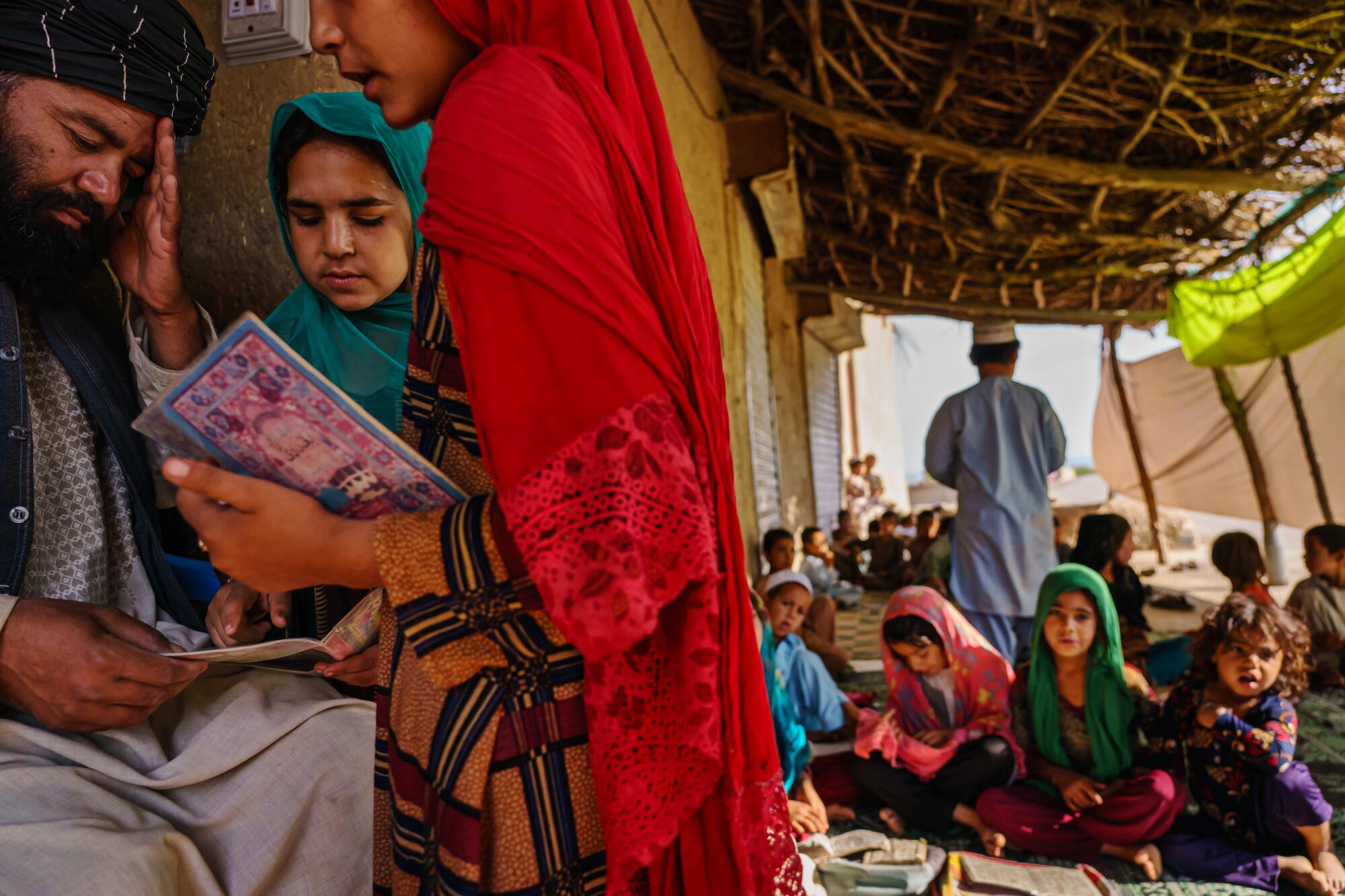
KANDAHAR, Afghanistan — Off a two-lane highway on this city’s northern edge lies a cemetery for Arab Al Qaeda fighters and their families, all killed in the waning days of 2001, when America first unleashed its wrath on Afghanistan.
Their graves — earthen mounds and crypts, marked by flags and colorful scarves stretched out on bamboo poles — have become shrines, a place of pilgrimage for those seeking divine healing. Dozens wander here every day, praying, rubbing pinches of salt placed on the graves for blessing. For them, the buried are martyrs of the jihad that first swept the Taliban to power, brought about the U.S. occupation and has now forced its exit.
“Jihad is part of the history of Afghanistan. … We see it’s already succeeded again,” said 38-year-old Mohammad Nazir, pride evident in his voice.
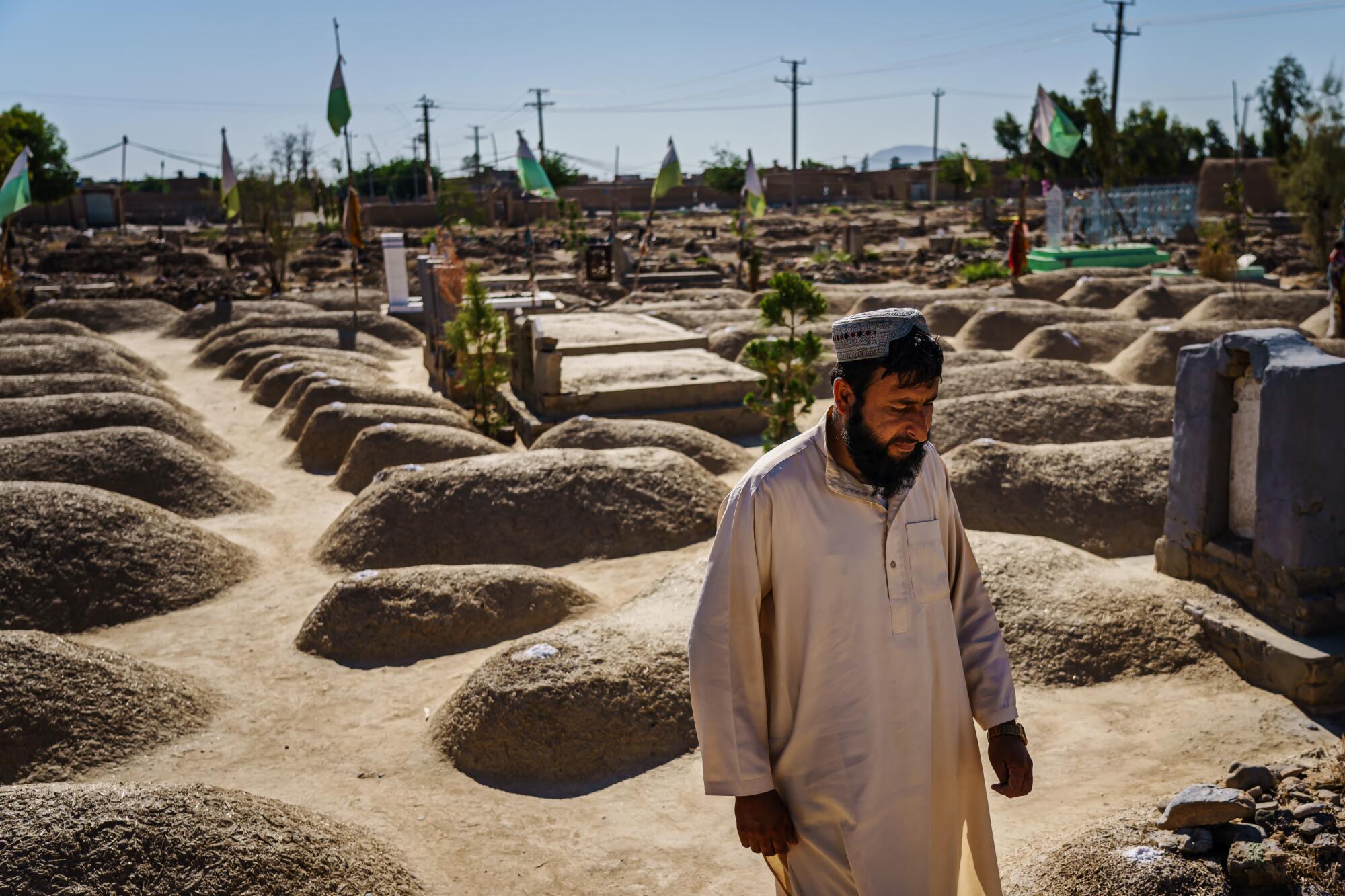
“The British attacked, the Russians attacked and now the Americans; all are defeated. The Taliban will come into the city — 100%.”
Two decades into the guerrilla war that has wrecked the worn-out towns and villages of Afghanistan’s southern region, America’s stab at nation-building here is winding down, with the Taliban more popular in many ways than the Washington-backed government.
With U.S. forces on track to withdraw completely by Sept. 11 — and possibly as soon as mid-July — many Afghans, like Nazir, are happy to see their backs. Others fear chaos. For most, the fighting has gone on for so long that sides are irrelevant; they’ll give allegiance to whoever stops the carnage.
That increasingly looks like it’ll be the Taliban, which is in the ascendant across the land.
In the last six months, its fighters blitzed into districts around Kandahar province — Arghandab, Panjwayi, Maiwand and Zhari — as part of a nationwide campaign. Earlier this month, the Islamist militant group seized Dahla, Afghanistan’s second-biggest dam and an essential source of irrigation and drinking water. Though the government clawed back some of those gains, the Taliban has tightened its vise-like grip around Kandahar city, the one area in the province still under relatively uncontested government control.
For Kandaharis, Taliban incursions are nothing new. The last 20 years have seen Afghan troops repulse repeated attempts by insurgents to retake the country’s second-largest city, a gateway between Pakistan and Iran. But U.S. forces this month packed up and left their base at Kandahar Airfield, and the air support that gave government forces a slight — but crucial — edge is dwindling. Soon, the Afghan army will be largely on its own.
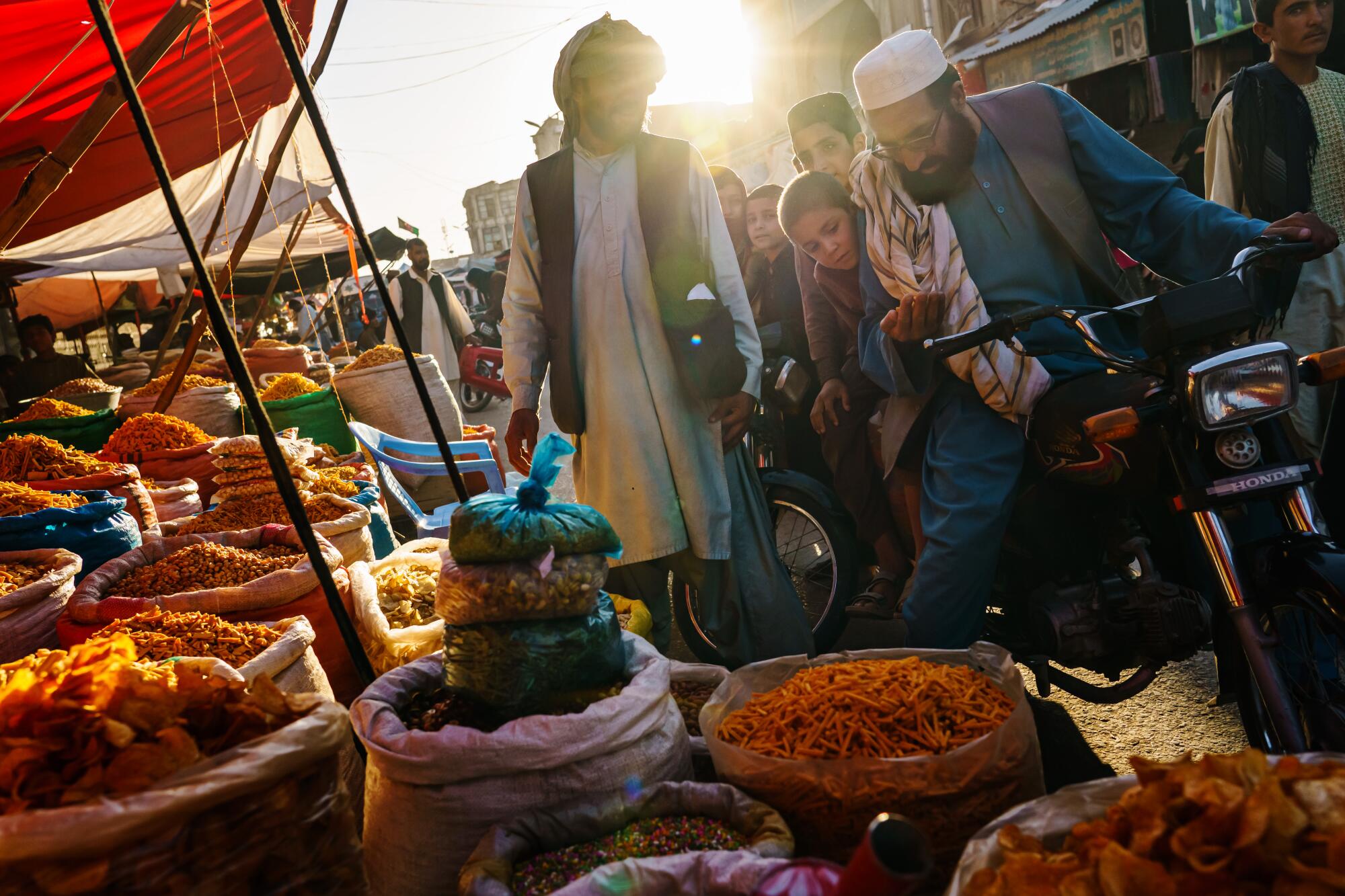
The fall of Kandahar, perhaps more than any other city, would confirm the futility of America’s project in Afghanistan.
Once the Taliban’s spiritual capital, Kandahar has been at the heart of U.S. efforts to win over the local populace by shepherding in an effective replacement for the government it overthrew. But hopes of success began faltering long ago.
And as U.S. and NATO troops draw down, Taliban fighters have engaged in a months-long onslaught whose sheer cruelty and devastation, coupled with the government’s all-out counterattacks, are liable to turn any victory into a Pyrrhic one for long-suffering civilians.
In Arghandab, a fertile district famous for its pomegranates, peaches and mulberries (and for its marijuana), about 9,500 families displaced by the fighting began streaming back once the battles shifted farther south.
It had been only a few months, but they returned to houses disfigured by makeshift crenels and passageways blasted out of bullet-pocked walls, and roofs cracked or collapsed by airstrikes and heavy weaponry. Gardens and fields, unwatered, had withered away. Furniture was looted or destroyed. And laced in the ground, in the walls, in the meadows — everywhere, it seemed — were mines left by the Taliban to slow the government’s advance.
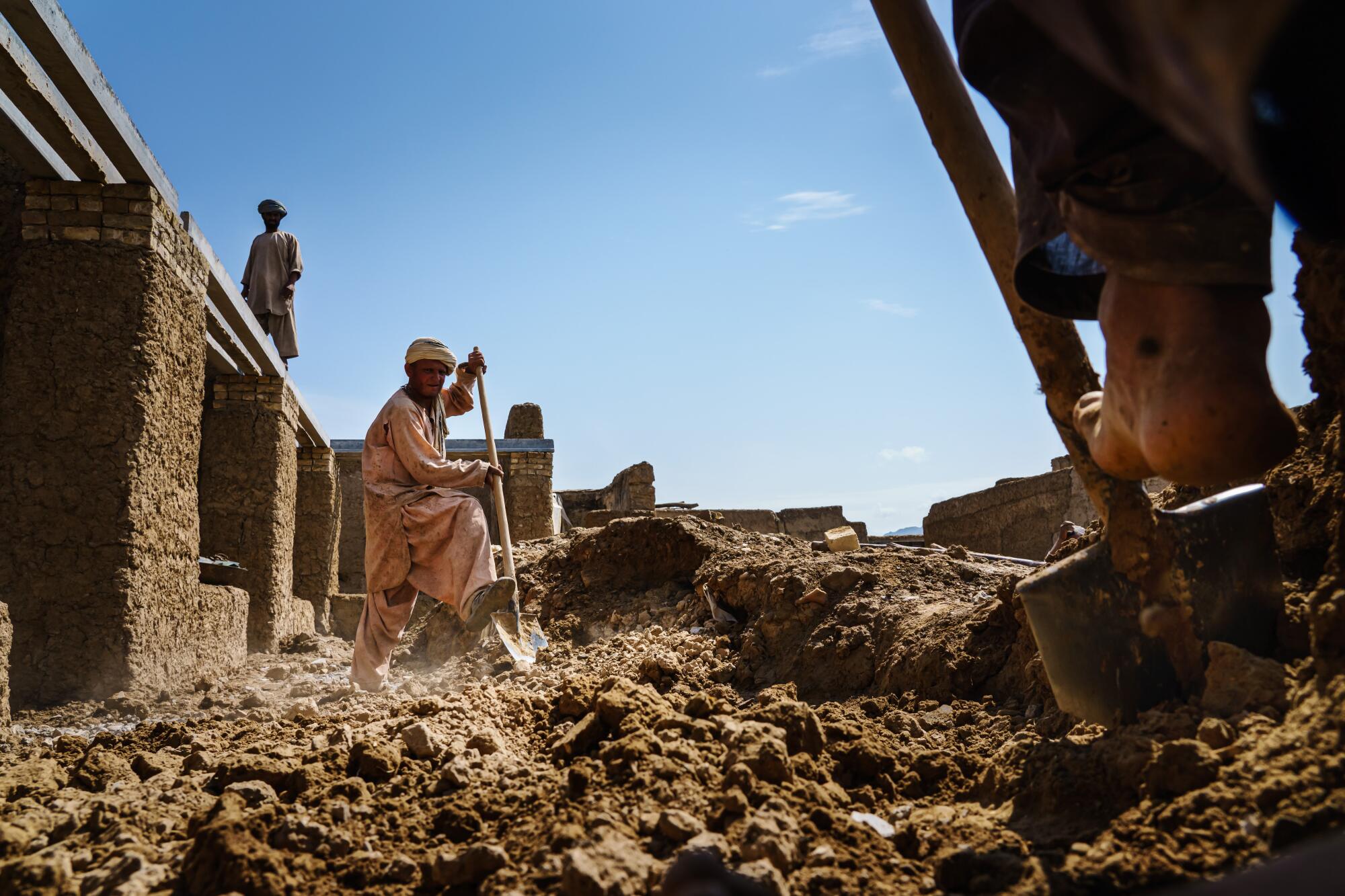
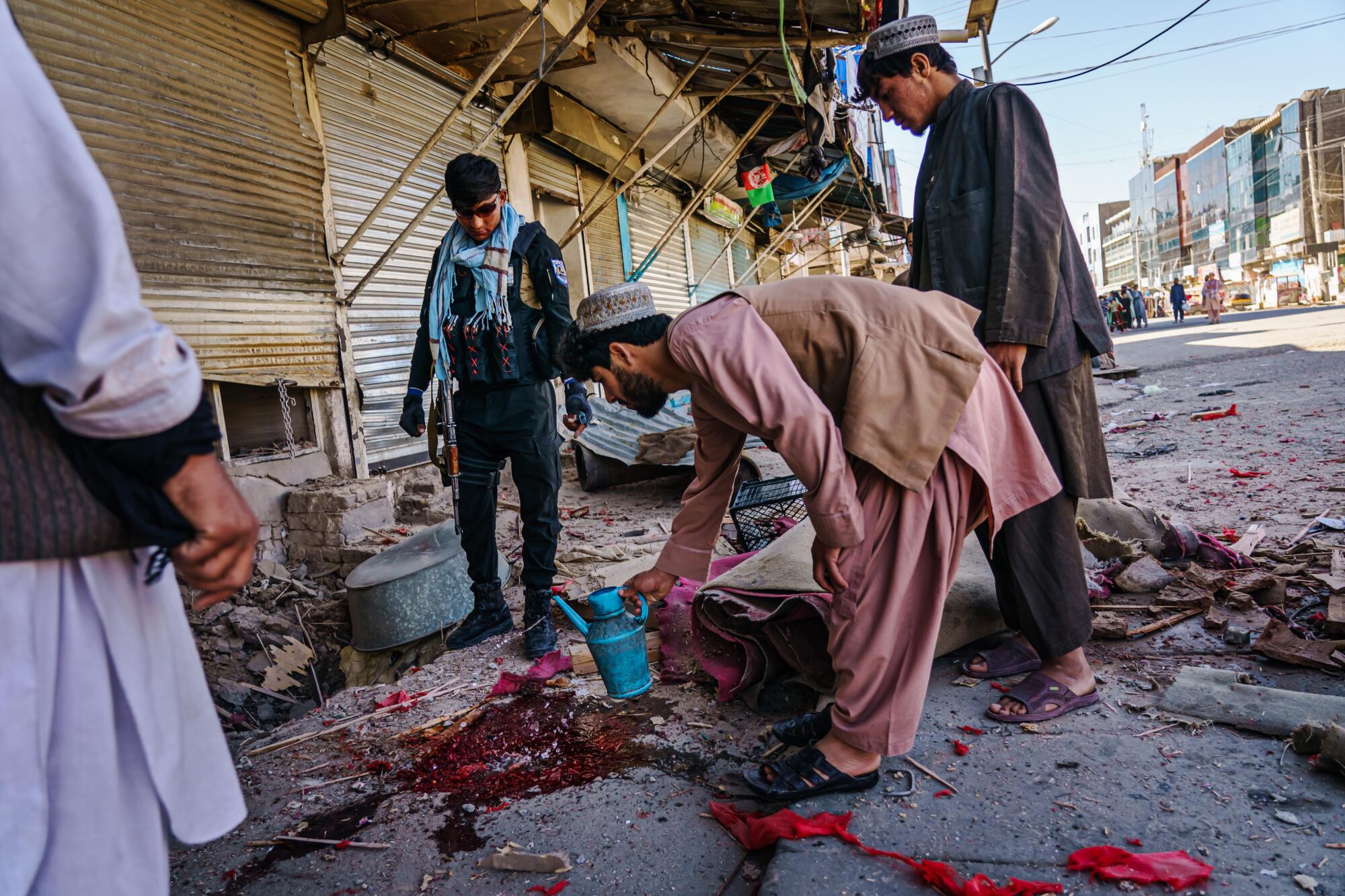
“We’ve never had such fighting in Arghandab,” said Mohammad Naeem, a 33-year-old farmer from the village of Babur, a few miles beyond a bridge on the Arghandab River. “I remember combat in the time of the Soviets. It wasn’t like this. Even when U.S. soldiers came, there wasn’t as much damage as now.”
In the few weeks since he and his four brothers returned to repair their houses, they had already attended the funerals of more than 100 people felled by the violence.
Both he and his brother, Hajji Mohammad, 52, accused government troops of running away, ceding ground to the Taliban for weeks before using heavy bombardment to drive them out.
“Look up at the ceiling — you see the damage the government did. Look at the ground — you see the Taliban’s damage. How can I be pleased with any of them?” Hajji Mohammad said.
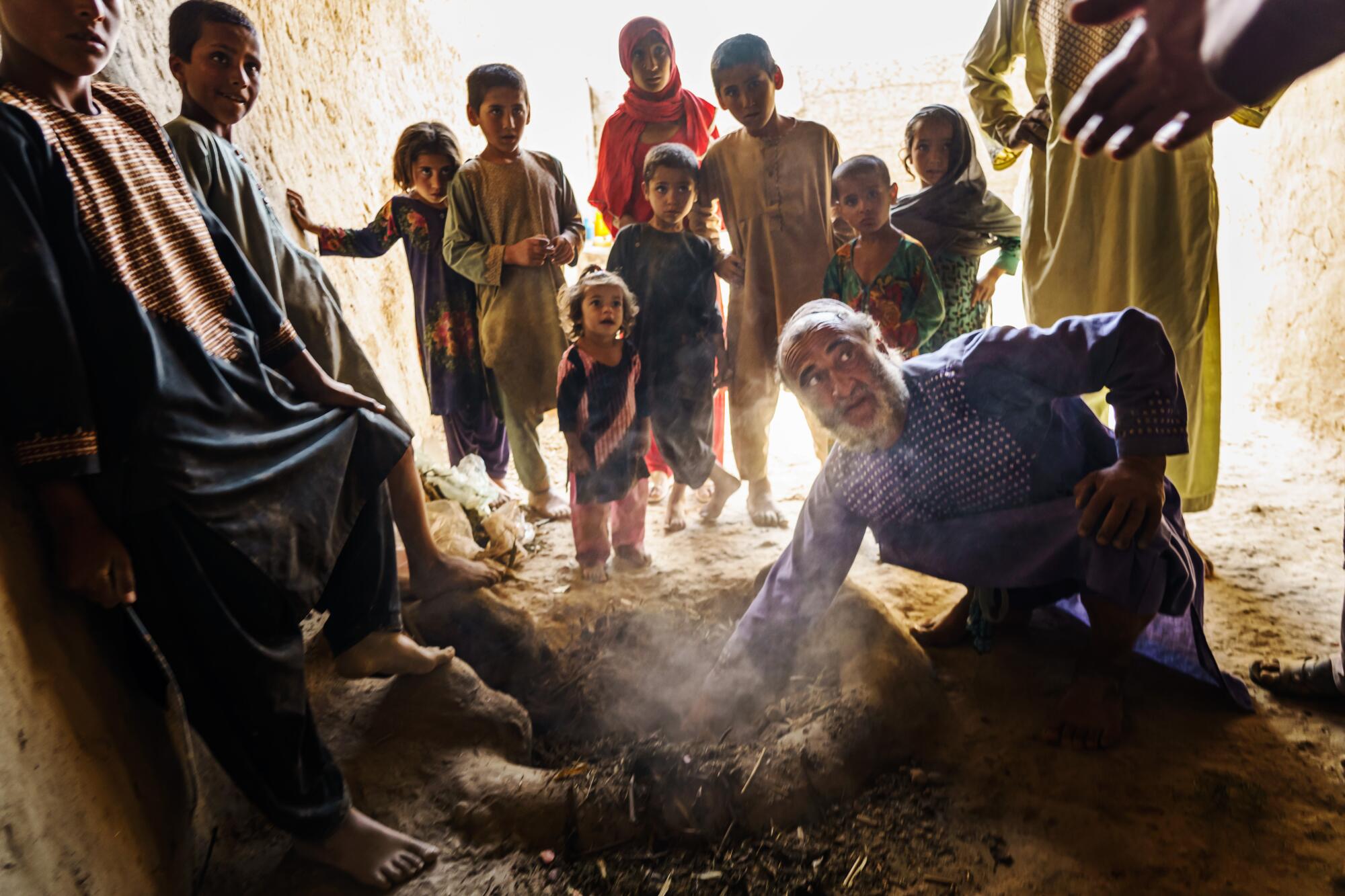
“They’ve taken everything from me. I’m alive, but it’s just breathing. Inside, I’m dead. My kids are hungry. Do I feed them, repair my home or fix my land?”
Still, the family was lucky: It had suffered no casualties. Over the last six months, doctors at Kandahar’s Mirwais Hospital have struggled with a deluge of more than 1,678 wounded and 560 dead civilians, all caught in the crossfire. Surgical wards first dealt with victims of combat and airstrikes; now it is the mines.
Mohammad Sawar, 55, gently tended the wounds of his son, 20-year-old Akbar Jan, who pulled himself up groggily by a truss over his bed. What remained of the young man’s right leg lay swathed in bandages. It had to be amputated after he triggered a mine as he fetched a blanket at his home.
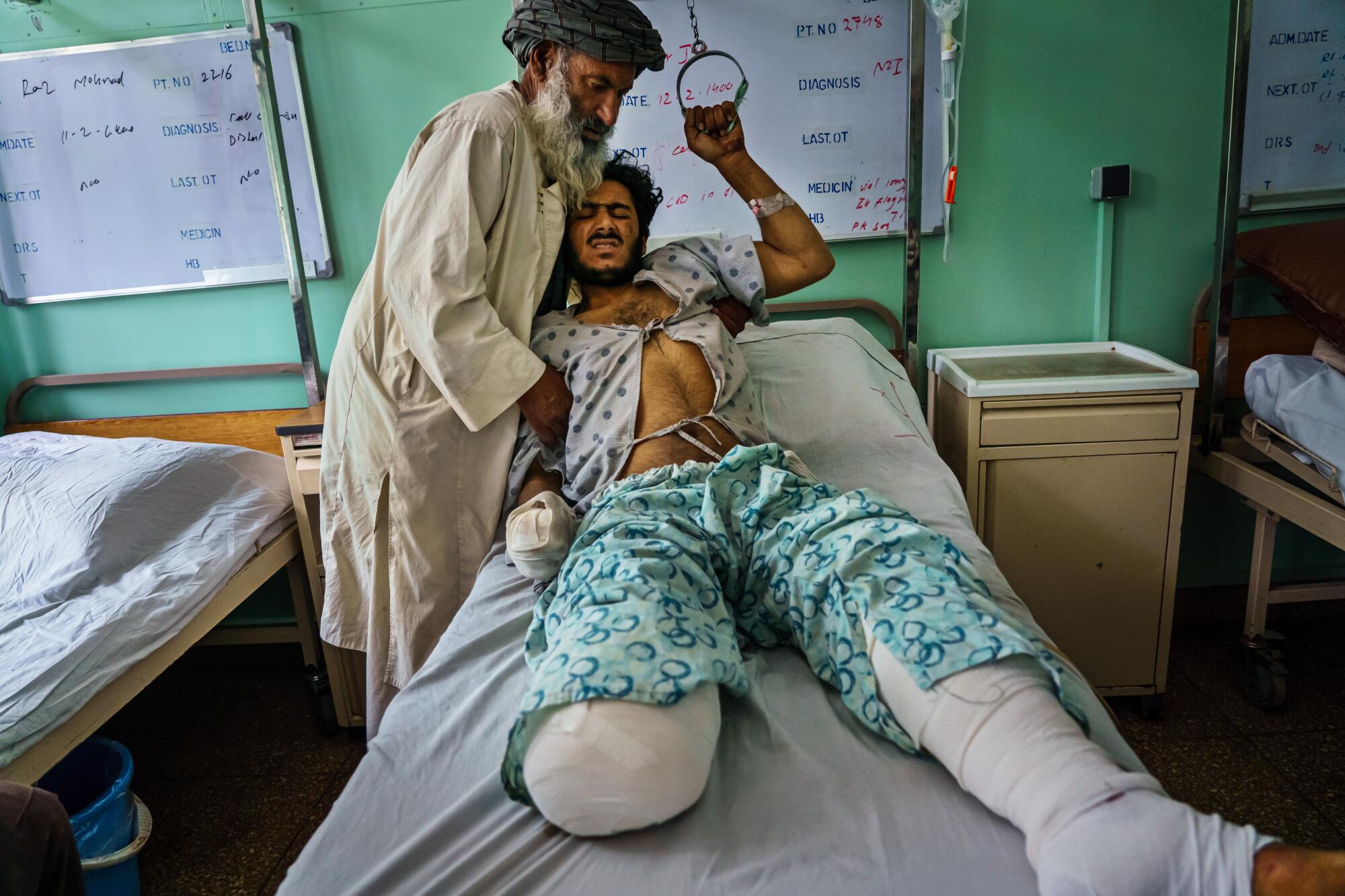
“He was my support. I have two other sons who are still just kids. He was the one who helped me run the family,” his father said. “If you’re fighting the government, put the land mines in the roads. But why do this? Why are civilians involved?”
Other residents remain stranded as they wait for the violence to subside. About 10 miles southwest of Babur, on a lunar-like plain stretching from the foot of a mountain in Panjwayi, stood a ragged collection of tents, where Abdul Khaliq Kochai yearned to return to his nearby village of Zangabad.
“We’re begging for help now. We used to have a good life, and now this is what we’re eating for iftar,” said Kochai, 47, nodding at a bowl of mulberries and a round loaf of bread.
More than anything, he seems exasperated by the chaos of the fight. “We just want to go home. If the government says it’s winning, then why can’t we go back? And if the Taliban says they’re winning, then why don’t they take the whole district and be done?”
The Taliban had made significant inroads into Panjwayi, prompting the government to abandon 95 of 103 checkpoints, said Haji Juma Gul Izhaqzai, the local police chief.
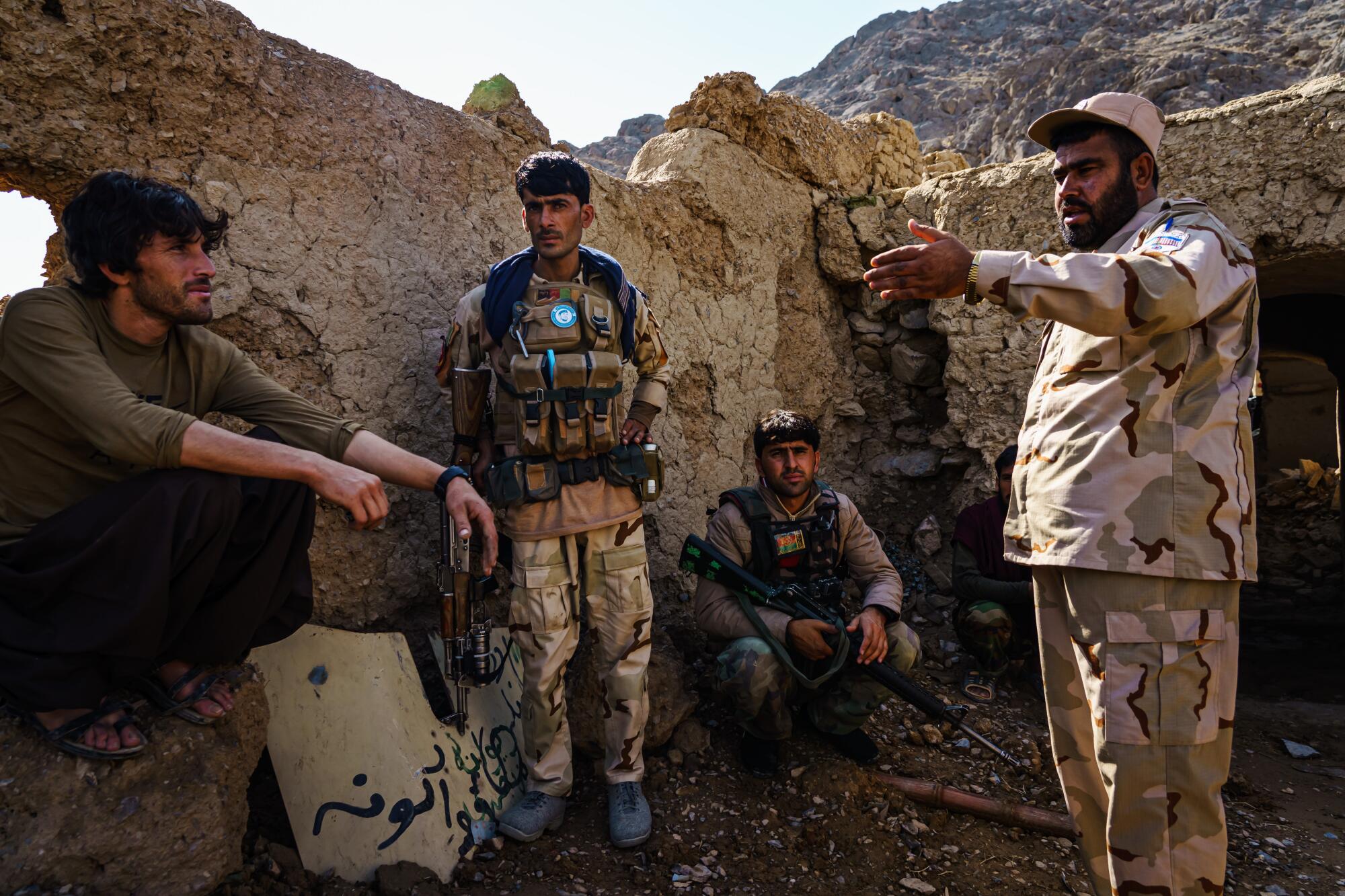
After he took charge, his forces regained 33. But it wasn’t easy. Izhaqzai still had ammunition, but many of his army-green Humvees bore the combat-grizzled patina of too many battles and too little maintenance. At a front-line base — the ruins of an abandoned home, really — down the highway, Izhaqzai’s men guarded a barbed-wire cordon they dared not pass for fear of mines and snipers.
Izhaqzai was confident he could defend the district, he said, but wary of Taliban sympathizers among Panjwayi residents.
“Half the people here are with me, and half with the Taliban,” he said.
Over the years, foreign overseers tinkered with tactics to swing that proportion in the government’s favor. Wielding both carrot and stick, they anointed heroes and villains for a population more immediately concerned with getting home safely than with the benevolence of U.S. power.
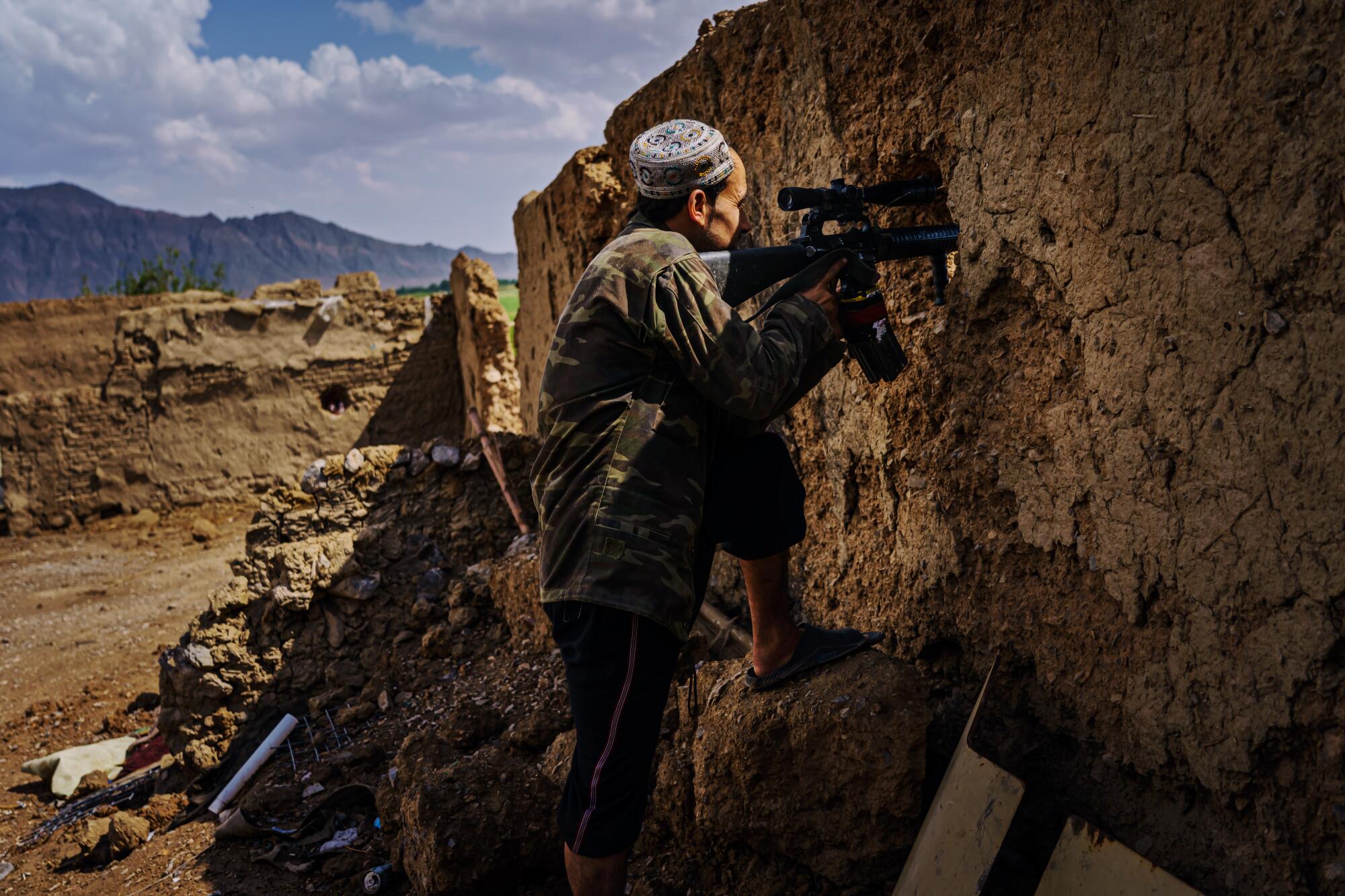
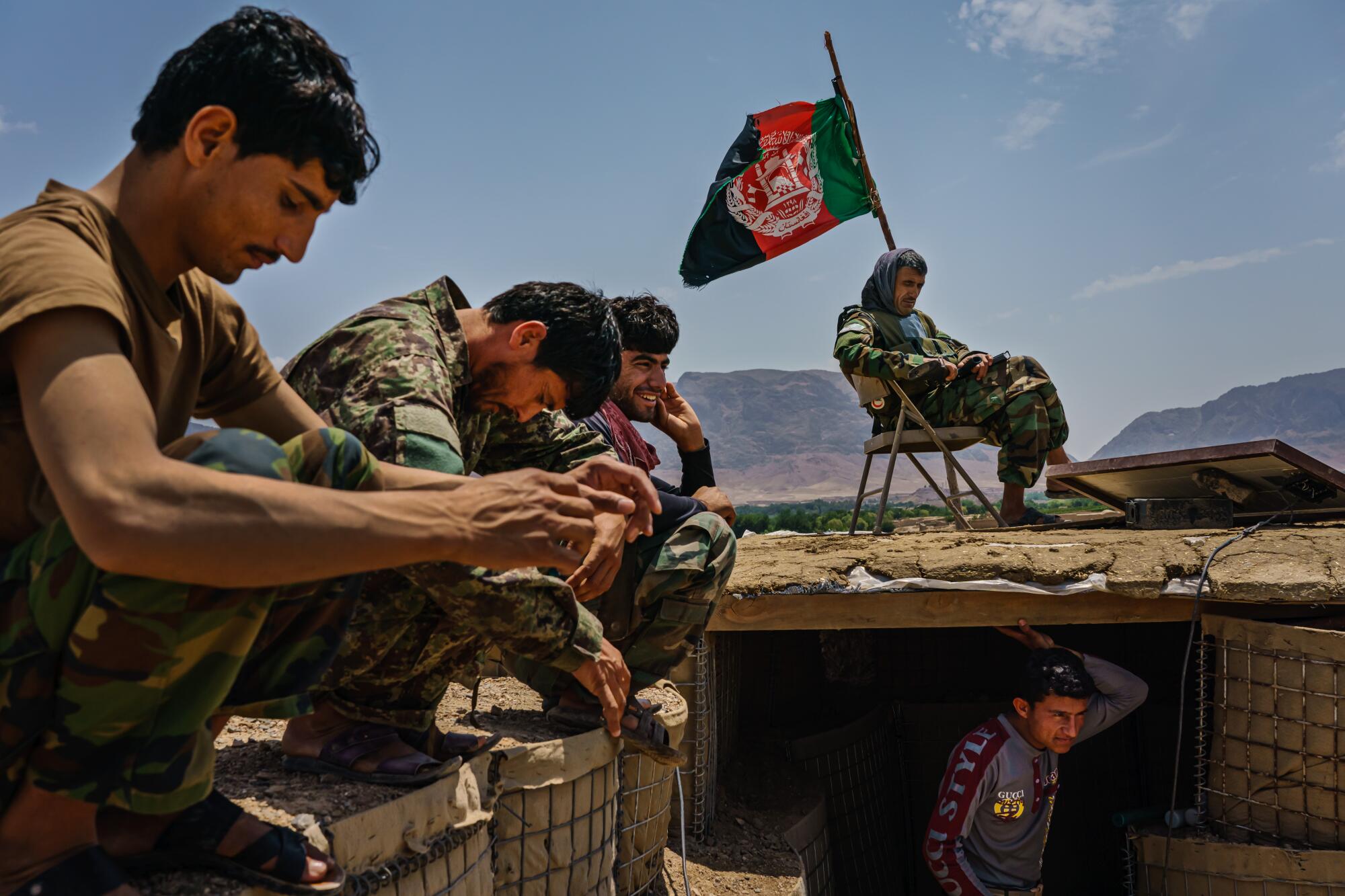
Yet safety is exactly what the government has failed to provide, many here point out. In fact, in the places where it has established control, the Taliban appears in many ways to be beating the government at its own counterinsurgency game, providing stability and an environment for locals to prosper, supporters say.
That’s especially true with regard to corruption, which all sides agree riddles the government, from top officials in plush offices all the way down to police officers at checkpoints.
In the shadow of an old Russian silo at the western edge of Kandahar, Hasibullah Karimi parked his truck near a government customs checkpoint for the hours-long wait before he could transport his cargo the rest of the way to Kabul, 300 miles to the north.
“The Taliban gives us one ticket, and it works all the way to Kabul,” he said, brandishing a pink customs receipt stamped with the words “Islamic Emirate,” plus a contact number and email address at the bottom for questions, concerns or emergencies.
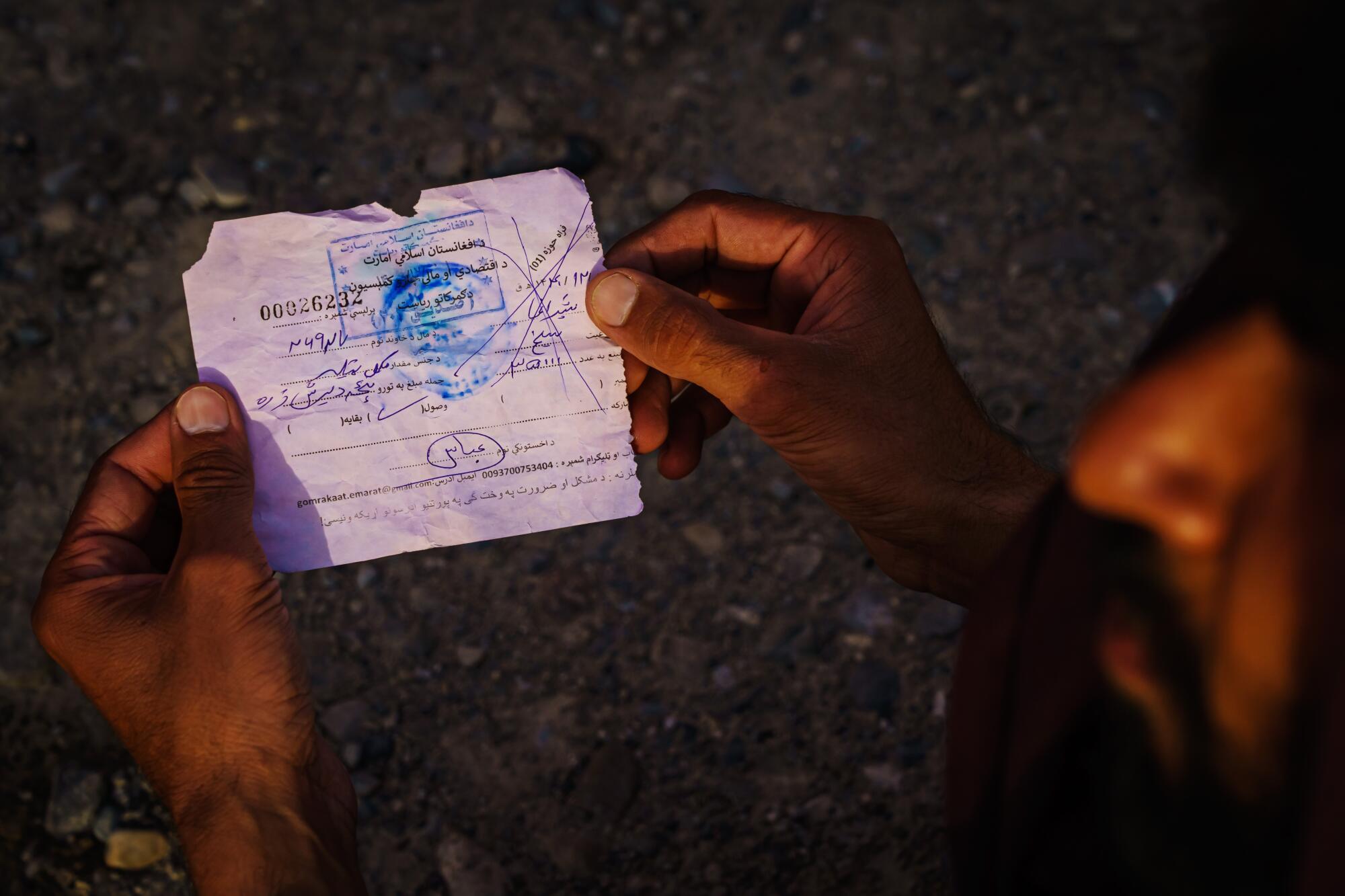
Karimi paid roughly $450 for his load of construction material after the truck had been weighed and checked against a schedule of tariffs.
In his estimation, the Taliban had seized more territory in recent months, whittling down government control to less than one-fifth of the highway along his route. But it was in those areas that he faced the biggest delays.
“With the government, we keep on paying. A paper here doesn’t work there, and they make us pay more and more each time,” Karimi said, adding that guards could turn violent when challenged. “All government checkpoints on the way, they try to get as much money as possible from us.”
A deep feeling of uncertainty has permeated Kandahar, where the tempo of explosions and assassinations has risen.
Earlier this month, Nimat Rawan, a former news anchor who worked for the Afghan Finance Ministry, was shot dead in broad daylight in the city center by two assailants who escaped with his phone. The following morning, a bomb detonated near a bakery in a market. No group claimed responsibility, but many believe it was the Taliban.
In the city’s upscale Aino Mina neighborhood, gaggles of men gather in the evening for impromptu picnics at roadside parks (women have separate areas), sitting on the grass for hours, smoking hookah pipes or delicately rolled hashish joints, complaining of how the tension and instability had affected everything, including their businesses.
“Advertising is all about investing money in the future. So how can anyone advertise when we don’t know the future?” asked Abdul Ahmad Dinar, a marketing executive at Hewad, a local television and radio station, as he sat with friends near a decorative pool. “Day by day, we’re seeing the situation become worse.”
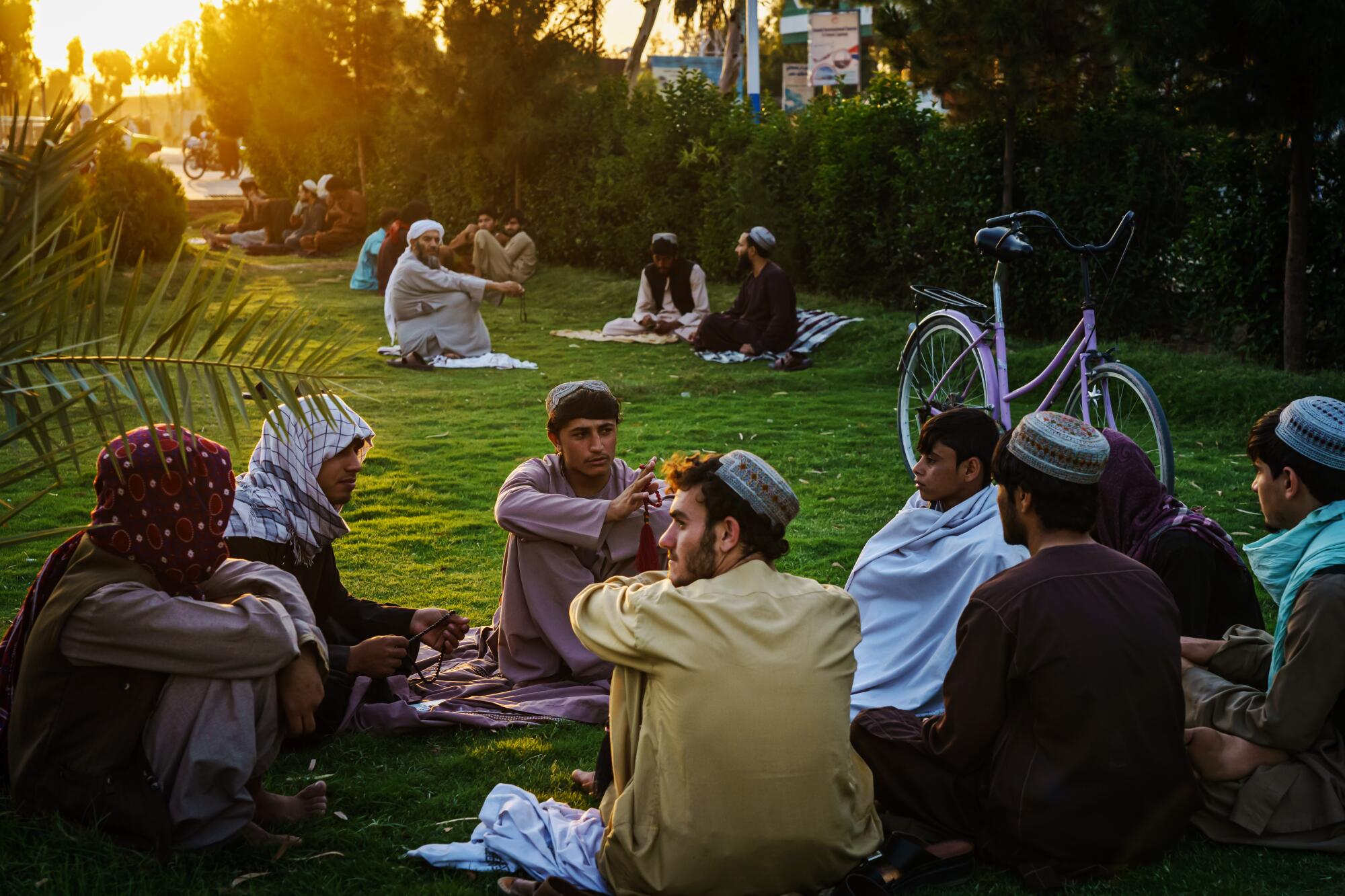
The outlook is even bleaker for women, who are set to lose the most in a Taliban takeover of Kandahar.
Since 2004, Maryam Durani, an indefatigable women’s rights activist, has nurtured the Khadija Kubra Women’s Assn. into an all-encompassing center for female empowerment. Hidden within the walls of a compound in a nondescript neighborhood of Kandahar, it offers a radio station focused on women’s issues, a health club, a library and classes in literacy and sewing. Durani also supports a local orphanage.
None of that came easy for a woman in a conservative city like Kandahar. In recent months, harassment of her staff has increased at the hands of those who see in the Taliban a coming restoration of the correct order of things.
“Men come up to the teachers as they walk to the school, telling them, ‘We will be coming soon, and there will be no school anymore,’” she said, adding that the threats had scared a number of participants from returning.
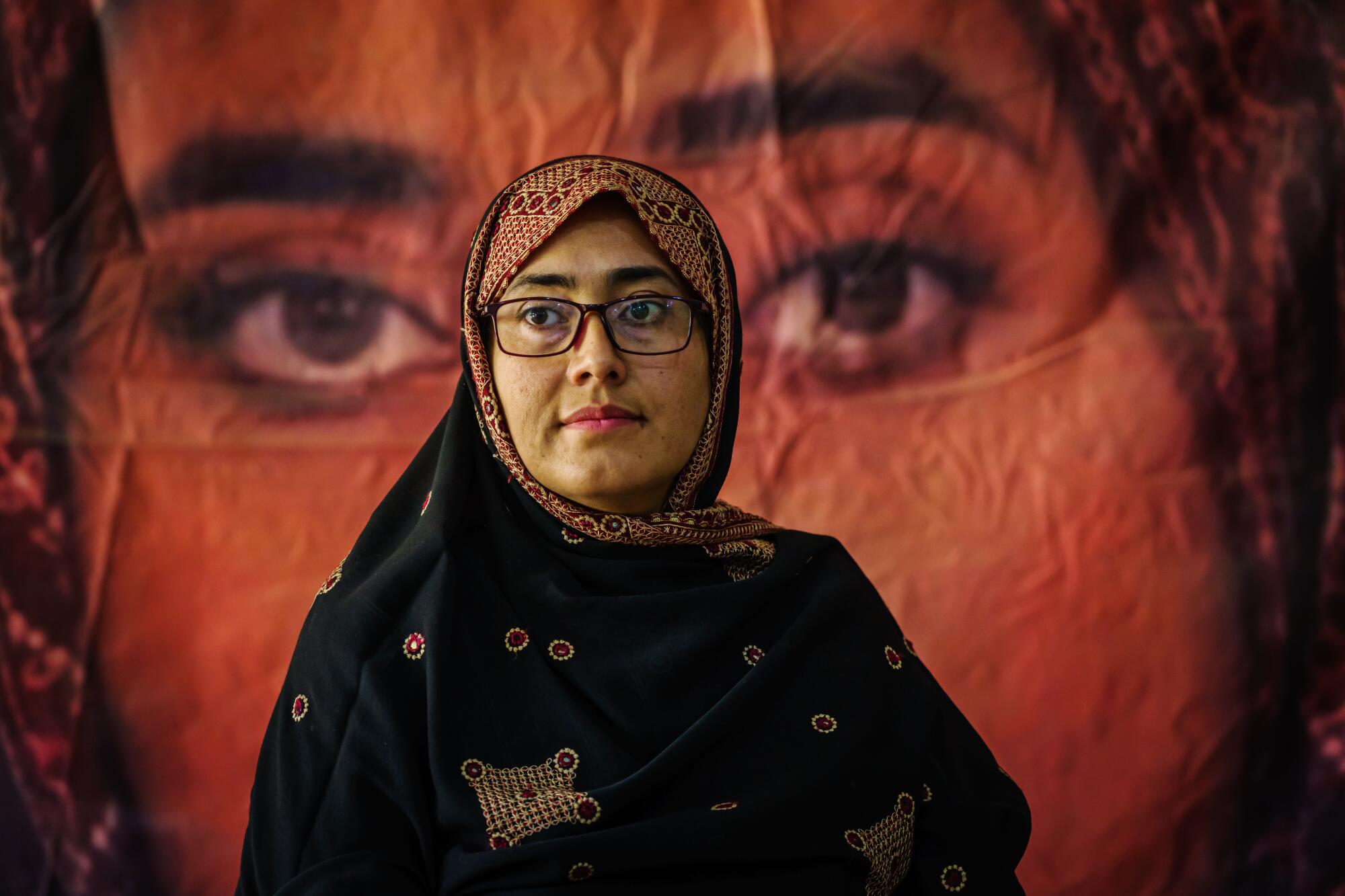
But, she asked, what would the Taliban do — make her wear a hijab? She wears one. Not have male employees? She doesn’t.
“They can tell me to wear 10 burqas, and I will, so long as I can continue educating girls,” Durani said.
Whatever happens next, she said, Kandahar isn’t the same city it was in the ’90s. Back then, crowds cheered Taliban commander Mullah Mohammed Omar’s victory in Kandahar and declared him Amir al Mumineen, the leader of the faithful.
The progress achieved for women cannot be reversed completely, Durani believes. Besides, even with the U.S.-backed government, it had always been an uphill battle to safeguard women’s rights. The Taliban coming in would mean another phase in that battle.
“The women won’t stop,” she said. “We’ll lose something. But we’ll fight.”
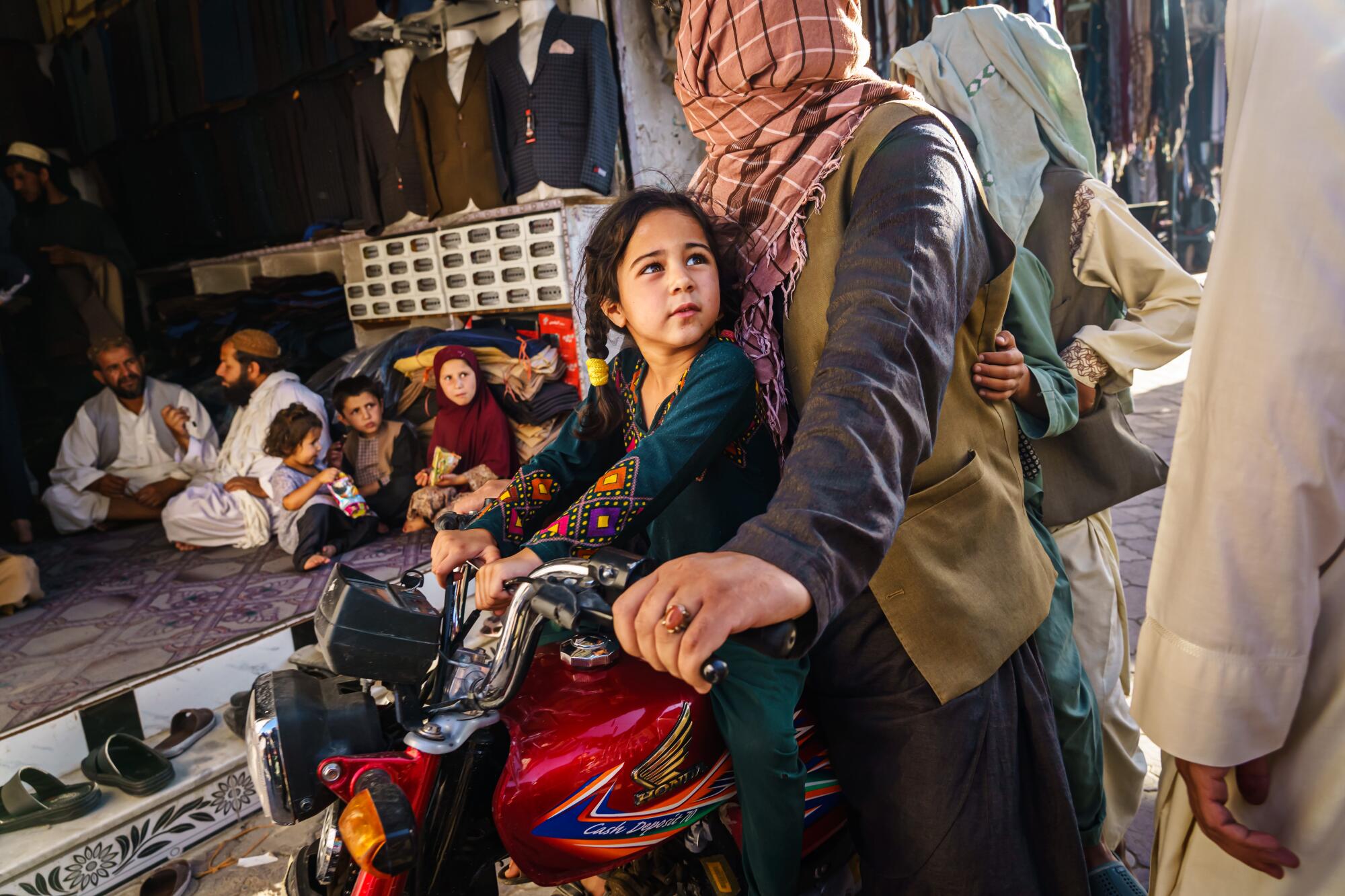
More to Read
Sign up for Essential California
The most important California stories and recommendations in your inbox every morning.
You may occasionally receive promotional content from the Los Angeles Times.
